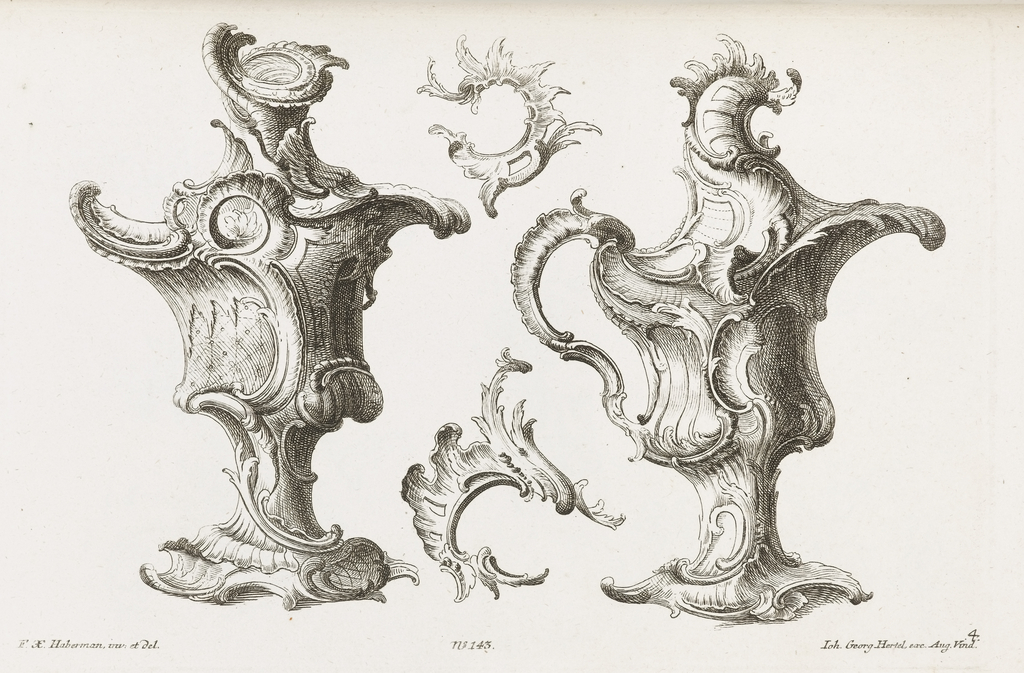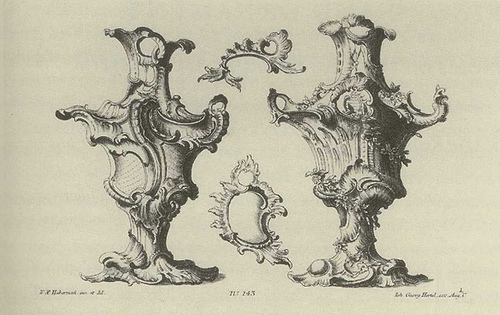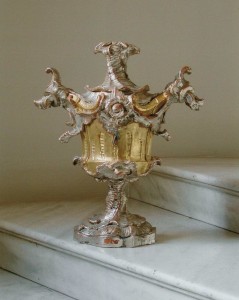How wild can you go with design! These dazzling images of ewer-shaped ornaments by the German rococo designer Franz Xaver Habermann prove that German rococo can be pretty flamboyant. This sheet comes from an album of ornament prints of designs for mirrors, candelabra, wall sconces, console tables and other furniture. While Habermann was trained as a sculptor, it appears from what little is known by him (an organ frontal in an Augsburg church (now destroyed) and a table centerpiece belonging to the Augsburg city collection) that he did not have much success in this area, despite the fact that he lived in Augsburg, the eighteenth-century center of the metal craft trades for which sculpture is essential for making the models.
By the mid-eighteenth century, commissions for costly gold and silver tablewares had dried up so, like many craftsmen working in the field of ornament design, Habermann turned his prodigious imagination toward creating ideas for furniture, cartouches, ceramics, altars, fireplaces, metalwares, etc., which were engraved and produced in a series of sheets by the Augsburg print makers Martin Engelbrecht and Johan Georg Hertel, as well as by himself. Note on this sheet the inscription in the lower left: FX Habermann inv. (inventit) and del. (deliniavit); FX Habermann invented this and drew it; and in the lower right: Joh. Georg Hertel. exc. Aug Vind. 4; Johann Georg Hertel, executed (engraved) it in Augusta Vindelicorum, the Roman name for the city of Augsburg. The number 4 would be the number of the plate in the series.
Habermann’s contribution to the dissemination of the German rococo style through these prints can be seen in porcelain, furniture inlays, wall coverings, and sculpted wood ornament all of Europe. While is it difficult for us today to imagine how this sheet of fanciful ewers could have been used in interior furnishings, another print from the same series has been cited as the source for a gilded wood ewer from the collection of Carleton Hobbs LLC, New York City.
Courtesy Carlton Hobbs LLC
Being only 18 ¾ inches high and not carved in the back, such a vase was not meant to hold any flowers or viewed in the round, but rather served as architectural decoration, like a fineal, attached to the wall or possibly a piece of furniture like a bed.


